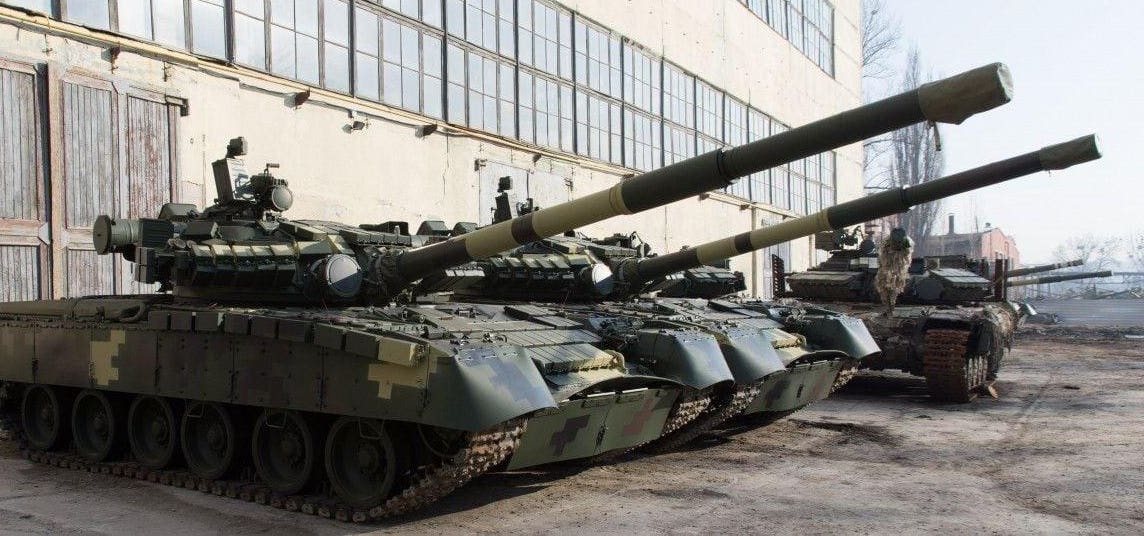Ukraine has, or is getting, a little more than 300 Western-style tanks from its NATO allies: 10 Strv 122s from Sweden, 14 Challenger 2s from the United Kingdom, 31 ex-American M-1s, 75 German-made Leopard 2s and as many as 200 Leopard 1s.
Three hundred tanks is far too few tanks totally to reequip Ukraine’s brigades, which probably require between 1,200 and 1,500 tanks. So old ex-Soviet tanks, currently the most numerous tanks in Ukrainian service, are likely to remain the most numerous tanks in Ukrainian service.
It’s worth asking how long it might take for Ukraine to run out of its most important tanks, the diesel-powered T-64BVs: recent upgrades of tanks that the Malyshev Factory in Kharkiv, in northeastern Ukraine, built for the Soviet army between 1963 and 1987, and which the Soviets left behind in Ukraine when the USSR collapsed in 1991.
The answer depends on a lot of variables and assumptions. In the most optimistic scenario for Ukraine, the last T-64BV blows up or gets captured or hopelessly damaged in 2027. In the least optimistic scenario, the Ukrainian T-64BV goes extinct in a couple of years.
The math is simple. The Ukrainian armed forces had 800 of the 40-ton, three-person tanks in active or reserve service when Russia widened its war on Ukraine in late February 2022. Another 450 T-64s were in storage.
In 21 months of hard fighting, the Russian destroyed or captured around 400 Ukrainian T-64s that independent analysts can verify. The Malyshev Factory has been reconditioning and upgrading inactive T-64s—adding modern optics, satellite navigation and explosive reactive armor—so it’s safe to assume the stored T-64s eventually will become active T-64s.
If it took 21 months for Ukraine to lose a third of its T-64s, it might take another 42 months to lose the other two-thirds. That’s nearly four years.
But the underpowered T-64 with its aging 125-millimeter main gun barrel and delicate autoloader is an old tank. Upgrades mostly make it more capable, not more durable. Years of combat could render hundreds of T-64s inoperable even if they escape major damage.
So don’t expect the roughly 800 remaining T-64s to last another four years, even at a loss rate in combat of just 200 tanks a year in the last two years.
Also don’t expect the Malyshev Factory to build brand-new T-64s from scratch. The plant might still have some tooling lying around, but it hasn’t manufactured a whole tank from the tracks up in 36 years.
When Russian tank-maker Uralvagonzavod recently announced it would resume producing T-80s “from scratch” after a 32-year-break, the announcement came with serious investment. Mere weeks later, the Kaluga Turbine Plant—Uralvagonzavod’s turbine-supplier—began forging transmission housings for the first time in decades.
The Malyshev Factory isn’t doing the basic metallurgy it would take to resume production of brand-new tanks. Why would it, when the demand for refurbished tanks is relentless, and the supply of old hulls and turrets for now seems vast?
Planners in Kyiv probably assume that, if the war grinds into 2026 or ‘27, Ukraine will have bigger problems than a shortage of T-64s.
Read the full article here





